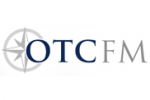 On November 14th I was invited to speak on a panel at the Osney Media OTC Derivatives Fund Management Conference.
On November 14th I was invited to speak on a panel at the Osney Media OTC Derivatives Fund Management Conference.
The panel discussion before mine was titled “Focusing on counterparty risk in the new CCP world”.
A number of interesting points were made by the panelists.
- LCH SwapClear stated that the Lehman’s default was handled with 35% of Lehman’s Initial Margin being used and no other funds being required. Most impressive to say the least.
- ATP, a large Danish pension fund stated that while Pension Funds currently have an exemption under EMIR, if at some point in the future they were required to clear, one of the things they would be concerned about was settlement risk of having to send and receive very large margin payments to a Clearing Broker; would much prefer a direct payment relationship with the Clearing House.
- Aviva Investors, a large UK Insurer stated that the reduction in netting benefit in moving from ISDA CSA where all derivatives with a dealer were netted to one where only certain eligible swap products were netted at a CCP account was a un-desirable outcome. In addition the requirement to access the Repo market for cash and securities as an added concern.
- An audience member made the point that account portability had a very significant drawback as it means that a Client would get the cash value of the securities held in their margin account and would then have to go to the market and re-purchase the securities, which at the specific point in time would be expensive if many other firms were doing the same trade.
On to my panel titled “Choosing your Clearing House” with representatives from Eurex, CME, Nomura (who turned out to have recently worked at SwapClear) and myself.
I started by answering the opener posed by Hugh Griffiths from Cutter Associates, “What factors should you consider when selecting your CCP?” My list of factors:
- Which product types are eligible at the CCP, both now and planned for the future?
- Margins, specifically multipliers imposed by Clearing brokers or CCPs on Client trades and whether Cross-Margining between OTC, ETD and Securities was available or planned.
- Collateral, eligible currencies and securities, haircuts.
- Default Fund, the size of this, the membership (criteria, names, financial resources), the CCP’s own capital and a history of successful clearing.
- Segregation of Client Accounts.
- Portability, the ease of transferring to another Clearing Broker and how much assistance the CCP provided in this.
- Reports & Tools,Statements both Summary and Detailed.
It was interesting to see the points highlighted by CME and Eurex, as this gave an insight into their strengths and where they would draw the battle-lines.
- CME focused on innovation; innovation in market structure and in product and also mentioned their new Swap Future contract.
- Eurex on the having the best client asset protection set-up with full segregation and access to central bank funding.
So no surprises from either of these given the history of their franchises.
The successful launch of Eurex OTC Clear offering for IRS on Nov 13th with 10 Clearing Members brings further competition to the by far and away market leader LCH SwapClear.
2013 is going to be a most interesting year to see where the majority of Client Clearing Volumes end up and why.
Another question posed to me by Hugh was “What tools are available to help make your choice?” My response:
- Two broad categories of questions; Static and Dynamic.
- Static ones being those questions where the answer was the same for any client; so questions on eligible products, collateral haircuts, account segregation, etc. Answers to these could easily be obtained from Clearing Members, CCP directly or consultants.
- Dynamic ones being those questions that had different answers depending on the Client and the day they were asked; so questions like what will be may margin requirement today?
- The dynamic questions would be time consuming to get a response from Clearing Brokers, particularly when they had their hands-full with on-boarding many clients to meet regulatory deadlines.
- The best tool here was to get access to a Margin Calculator, either from a Clearing Broker, direct from the CCP or from Software Vendors. This could then be used directly by a Client’s own staff to upload portfolios and understand margin requirements; not just today but back-test their historic margin requirement for budgetary planning purposes and simulate new trade activity to educate their trading and risk staff on the how and why margin requirements change with new trades.
Panel done, thanked the chair and off to mingle with the audience and other panelists.
Overall a good event with a decent turnout.
